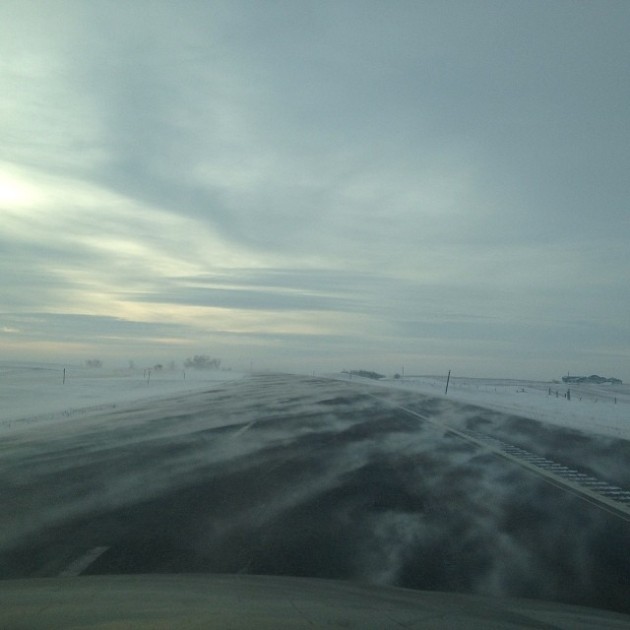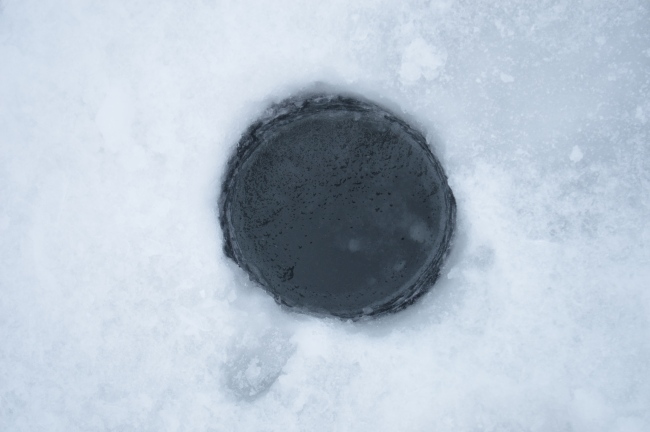This past summer I lived for three months in South Dakota while I interned with Monsanto. It was an enjoyable internship experience. I got to see a lot of beautiful scenery, learn a lot about corn and soybeans and I was thankful I was able to try living in the Dakotas for a three month period and not on a permanent basis. Their summers in the Dakotas are extremely mild compared to hot and muggy Alabama summers, but I wanted to go and see what winter was like. During Christmas break I paid a winter visit to South Dakota, and let me tell you it is an entirely different ballgame than what I am used to.
 Temperatures were below zero the majority of the time I was there. The wind chill was anywhere from -13 to -45, until I got off the plane in Aberdeen, I had never felt temperatures below zero. However these low temperatures are very conducive to recreational activities that I have never participated in like snowmobile riding and ice fishing.
Temperatures were below zero the majority of the time I was there. The wind chill was anywhere from -13 to -45, until I got off the plane in Aberdeen, I had never felt temperatures below zero. However these low temperatures are very conducive to recreational activities that I have never participated in like snowmobile riding and ice fishing.
Ice fishing was what I was most excited about getting to attempt on my trip. Zack, who preaches at the church I attended this summer agreed to take me. So he got out the fishing rods the night before we went and got them all ready to go. I was surprised at how tiny they were!
 The next morning we woke up early, I put on almost all the clothes I had brought with me (literally, even my pajama pants) and we drove to Pickerel Lake about 60 miles east of Aberdeen. Pickerel is a big fishing lake, a beautiful area I frequented this summer to watch sunsets and walk. Zack brought along his wife Elizabeth and their two year old son Isaac. We pulled up to the lake and Zack instructed us to roll down our windows “just in case the car fell through the ice.”
The next morning we woke up early, I put on almost all the clothes I had brought with me (literally, even my pajama pants) and we drove to Pickerel Lake about 60 miles east of Aberdeen. Pickerel is a big fishing lake, a beautiful area I frequented this summer to watch sunsets and walk. Zack brought along his wife Elizabeth and their two year old son Isaac. We pulled up to the lake and Zack instructed us to roll down our windows “just in case the car fell through the ice.”
 I did a double take. In Alabama our lakes hardly ever freeze over, much less do they freeze where you can walk on the ice, MUCH LESS DRIVE ON IT! But sure enough there were vehicles scattered all over the lake.
I did a double take. In Alabama our lakes hardly ever freeze over, much less do they freeze where you can walk on the ice, MUCH LESS DRIVE ON IT! But sure enough there were vehicles scattered all over the lake.
 We started out across the lake in their Honda Accord. The snow was blowing which made it hard to see the tracks made by other vehicles. We made it a few hundred feet and got stuck. I didn’t have on my coveralls yet, but Zack and I jumped out to push the car out of the deep snow we had got stuck in. We drove out to where some of the other vehicles were. We got out and sure enough you could walk around, it was tough to tell you were even on ice because it was covered with snow except for a few patches here and there.
We started out across the lake in their Honda Accord. The snow was blowing which made it hard to see the tracks made by other vehicles. We made it a few hundred feet and got stuck. I didn’t have on my coveralls yet, but Zack and I jumped out to push the car out of the deep snow we had got stuck in. We drove out to where some of the other vehicles were. We got out and sure enough you could walk around, it was tough to tell you were even on ice because it was covered with snow except for a few patches here and there.
 Zack and I drilled some holes in the ice with his hand auger.
Zack and I drilled some holes in the ice with his hand auger.
 The auger makes a nice little 6 inch hole. You have to have some way to drill a hole, the ice is so thick you cannot break it by hitting it with something. The ice was about 3 foot thick.
The auger makes a nice little 6 inch hole. You have to have some way to drill a hole, the ice is so thick you cannot break it by hitting it with something. The ice was about 3 foot thick.
 After you drill a hole you can use a fish finder or even just drop your line in and see if you get a bite.
After you drill a hole you can use a fish finder or even just drop your line in and see if you get a bite.
We finally decided on a spot and set up our ice shack. Ice shacks reminded me of campers, you have some that are super fancy and some were super simple.
 The one we used was a little pop-up deal that fit nicely inside a hard sided case.
The one we used was a little pop-up deal that fit nicely inside a hard sided case.
 It isn’t made of much, but I was surprised how warm it was inside, especially because we had a space heater since little Isaac was along. Just being out of the wind helped. The wind was so strong we had to made sure someone was in it so that it did not blow away!
It isn’t made of much, but I was surprised how warm it was inside, especially because we had a space heater since little Isaac was along. Just being out of the wind helped. The wind was so strong we had to made sure someone was in it so that it did not blow away!
 The kind of fish that we were fishing for are pan fish like blue gill and crappie. You can barely feel their bite so the strategy was to watch the tip of the rod for movement. Since we had Isaac along in the shack with Elizabeth and I, it was very hard to do and we had little luck.
The kind of fish that we were fishing for are pan fish like blue gill and crappie. You can barely feel their bite so the strategy was to watch the tip of the rod for movement. Since we had Isaac along in the shack with Elizabeth and I, it was very hard to do and we had little luck.
 eing able to go ice fishing was definitely a new experience, ice of that proportion was new to me. I am now by no means an experience ice fisher. If someone who is a seasoned ice fisherman was to read this, they will probably laugh at my description of the endeavor and terminology, however for an Alabama gal, I was doing good to be out there sitting on a frozen lake. I would like to try it again sometime, can you ice fish where you live? What has been your experience?
eing able to go ice fishing was definitely a new experience, ice of that proportion was new to me. I am now by no means an experience ice fisher. If someone who is a seasoned ice fisherman was to read this, they will probably laugh at my description of the endeavor and terminology, however for an Alabama gal, I was doing good to be out there sitting on a frozen lake. I would like to try it again sometime, can you ice fish where you live? What has been your experience?









